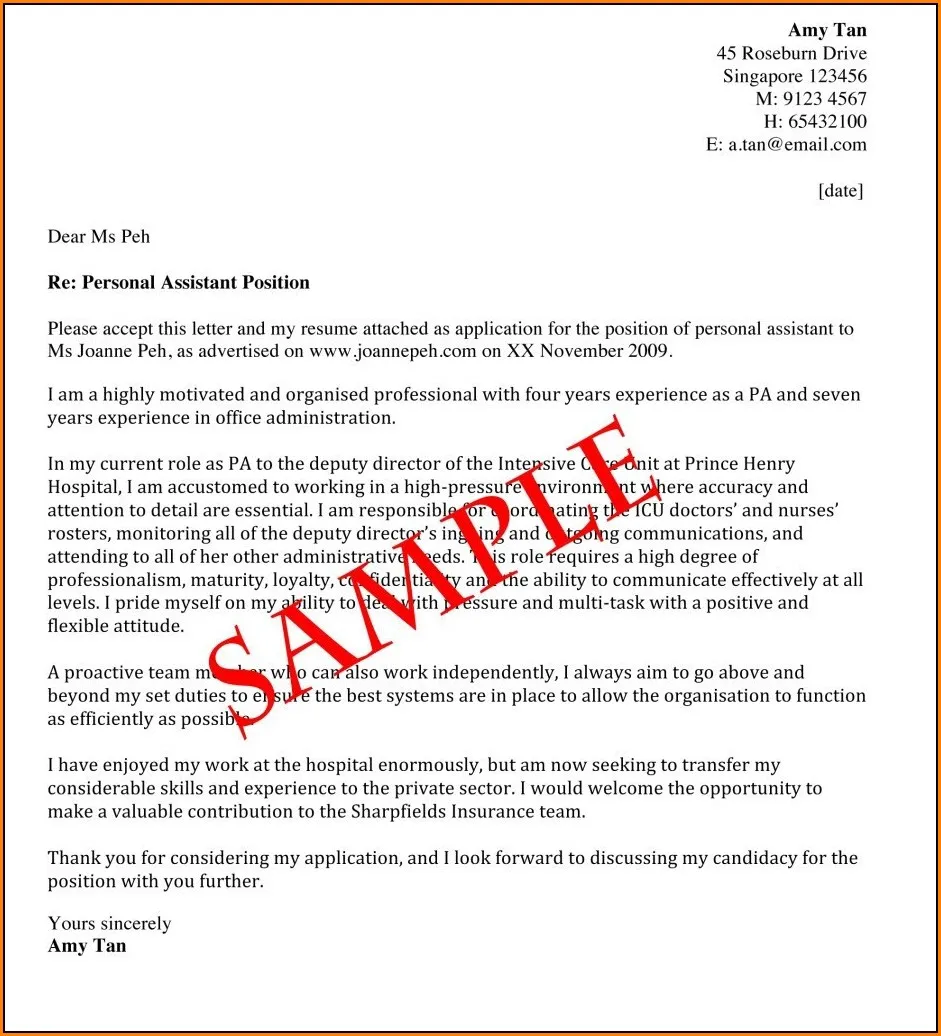What is a Cover Letter for Resume?
A cover letter is a crucial document that accompanies your resume when you apply for a job. It serves as an introduction, providing the hiring manager with additional context and details about your qualifications, skills, and interest in the position. Unlike the resume, which provides a snapshot of your experience and education, the cover letter allows you to elaborate on why you are a strong fit for the specific role and company. It offers a valuable opportunity to personalize your application and demonstrate your enthusiasm for the opportunity. Moreover, a well-crafted cover letter can differentiate you from other candidates and increase your chances of getting an interview. It is an essential tool in your job search arsenal, and taking the time to write a compelling cover letter is a worthwhile investment.
Why is a Cover Letter Important
The importance of a cover letter extends beyond simply fulfilling a job application requirement. It is a powerful tool for making a positive first impression on potential employers. A cover letter offers a platform to communicate your personality, passion, and unique value proposition in a way that a resume alone cannot. It allows you to showcase your communication skills, demonstrate your understanding of the role and company, and highlight how your skills and experience align with their needs. In many cases, a cover letter can be the deciding factor in whether your application gets noticed. It gives you a chance to explain career gaps, address any potential concerns, and provide a compelling narrative that complements your resume. Ultimately, a well-written cover letter can significantly enhance your chances of landing an interview and securing your desired job.
Key Components of a Cover Letter
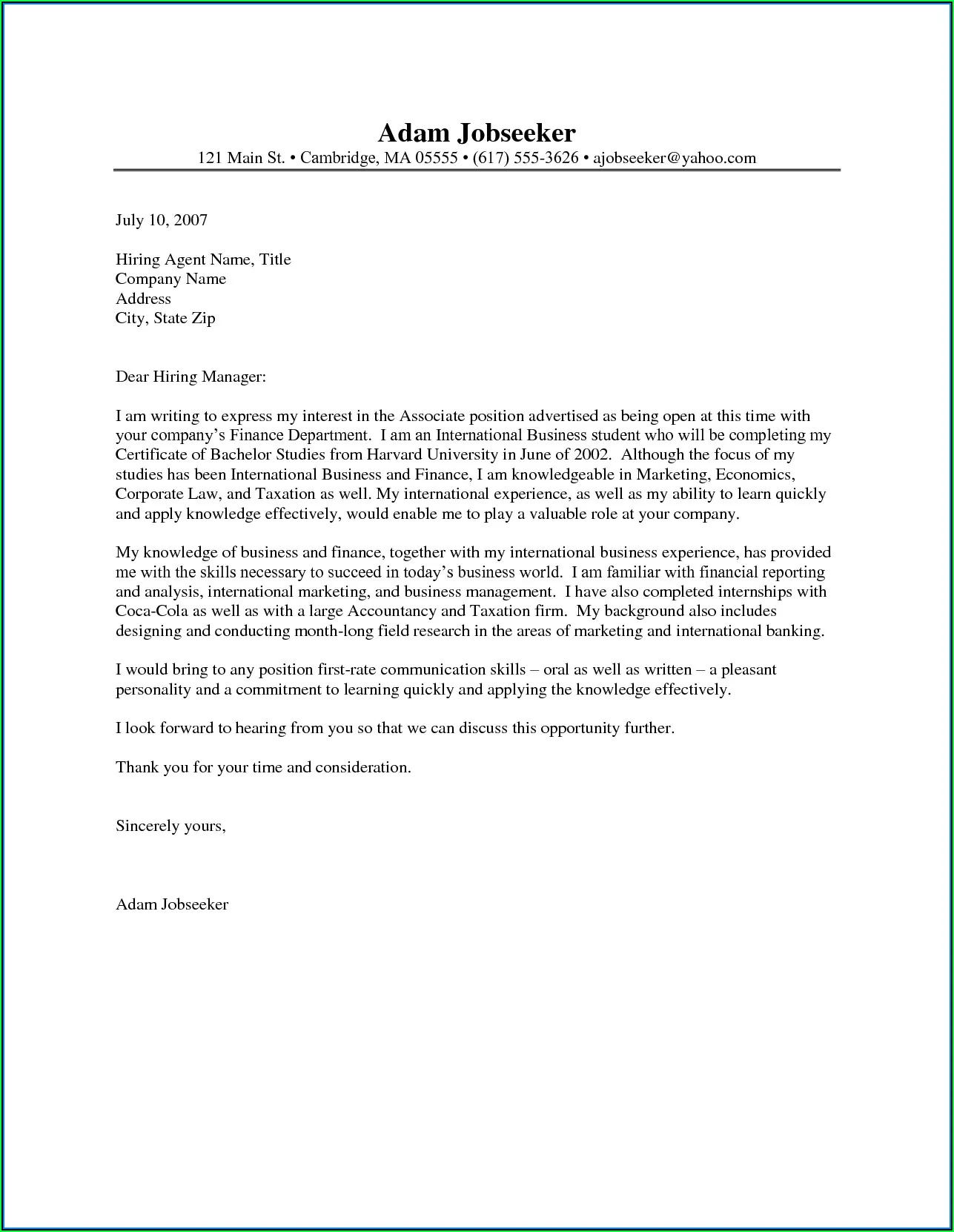
A strong cover letter is comprised of several key components, each designed to convey specific information effectively. These components, when combined, create a cohesive and compelling narrative that highlights your qualifications and suitability for the role. Understanding these essential elements will help you structure your cover letter and ensure that it captures the attention of the hiring manager. From the header to the closing, each section plays a vital role in presenting you as a well-prepared and enthusiastic candidate. By carefully crafting each component, you can maximize the impact of your cover letter and increase your chances of securing an interview.
Header Section
The header of your cover letter sets the stage and provides essential contact information. It should include your full name, address, phone number, and email address. Consider using a professional font and layout to create a polished look. You may also include the date and the name and address of the hiring manager and the company, if known. Ensuring the header is accurate and easy to read demonstrates your attention to detail and professionalism. Proper formatting in the header is the first step in making a positive impression and providing the necessary contact information for the employer to reach you.
Recipient Information
Addressing the recipient correctly is a crucial step in making a positive impression. If you know the hiring manager’s name, always use it to personalize your letter. If the name is not provided in the job description, do some research to find the appropriate person, such as the hiring manager or the recruiter. Use their formal title if possible. If you are unable to determine a specific name, use a professional greeting such as “Dear Hiring Manager” or “Dear [Department] Team.” Avoid generic greetings that may seem impersonal. Addressing the letter to the right person shows that you have done your research and are genuinely interested in the position. It signals that you are dedicated and committed to securing the job.
Salutation
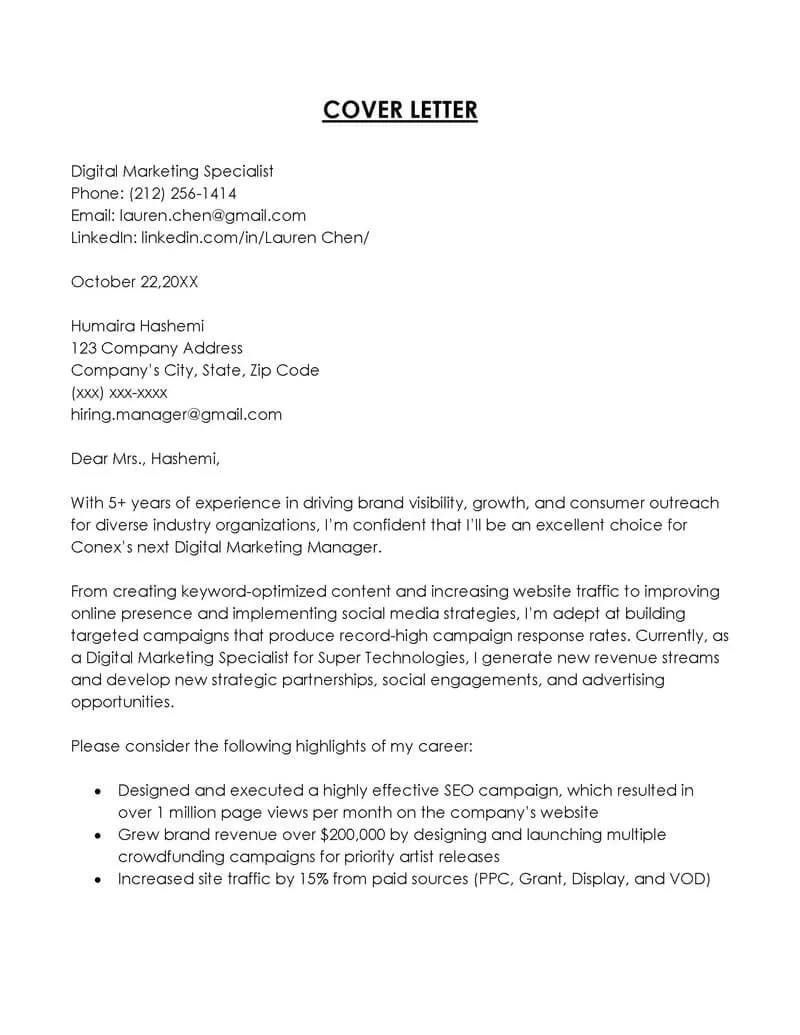
The salutation establishes the tone of your cover letter. Use a formal and respectful greeting, such as “Dear Mr./Ms./Mx. [Last Name],” if you know the hiring manager’s name. If you are unsure of the name or the hiring manager’s gender, you can use “Dear Hiring Manager” or “Dear [Department] Team.” Avoid casual greetings like “Hi” or “Hello.” Your salutation should align with the overall tone of your letter, which should be professional and demonstrate your respect for the recipient. Take the time to ensure the salutation is appropriate to begin your cover letter on the right foot.
Body Section
The body section is where you will sell yourself to the hiring manager. It’s the opportunity to express your interest and outline your key qualifications and how they relate to the job description. The body should be divided into paragraphs, each focused on a specific aspect of your suitability for the position. Aim for clarity, conciseness, and a compelling narrative. The body is the most crucial part of your cover letter, so ensure that each section showcases your value and potential contributions to the company. Remember to write your cover letter as if you are having a conversation with the hiring manager, and this can increase your chances of landing an interview.
First Paragraph Make an Impression
The first paragraph is your opportunity to capture the hiring manager’s attention and express your enthusiasm for the position. State the specific role you are applying for and where you found the job posting. Briefly mention why you are interested in the company and the role. This introduction should immediately establish your purpose and demonstrate your knowledge of the company and the specific job. It’s your chance to make a strong first impression, so make it count. A well-crafted opening paragraph will draw the reader in and encourage them to continue reading, increasing your chances of being considered for an interview.
Second Paragraph Showcase Skills
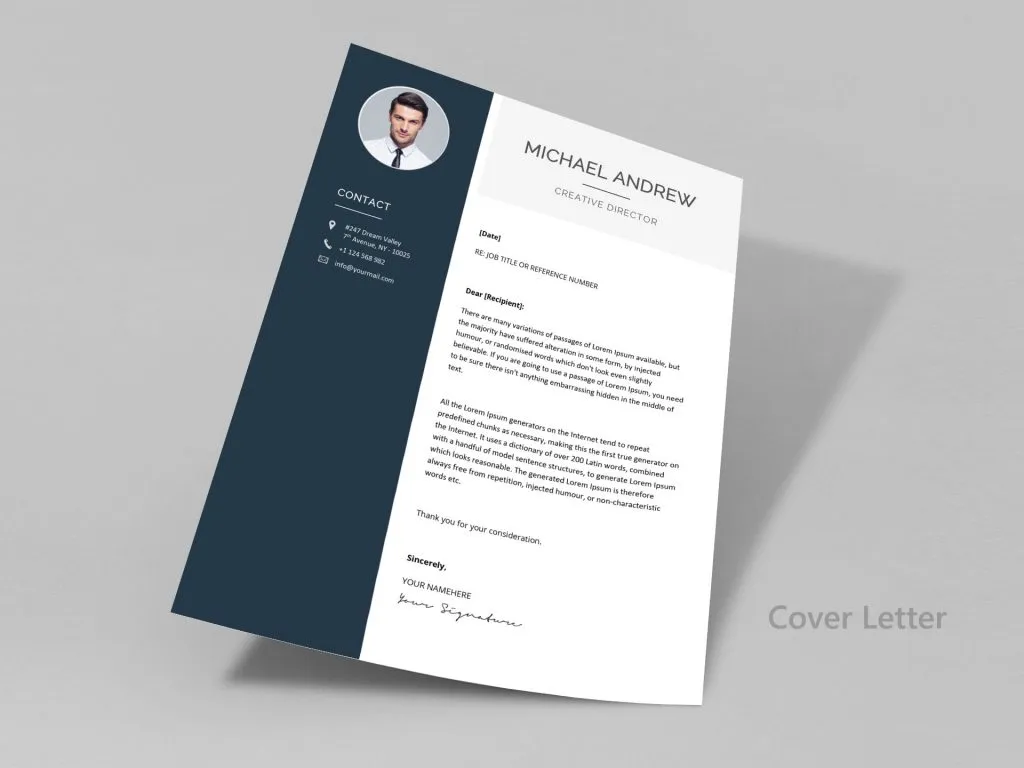
In the second paragraph, focus on highlighting your relevant skills and experience. Refer to the job description and identify the key requirements that the company is looking for. Select a few of your most relevant skills and accomplishments that align with these requirements and demonstrate how you have successfully applied them in previous roles. Provide specific examples and quantifiable results whenever possible to make your claims more impactful. Show, don’t just tell, by detailing how your skills and experiences have led to tangible achievements. Tailoring this paragraph to the job description shows your genuine interest and your commitment to the position.
Third Paragraph Highlight Value
The third paragraph should emphasize the value you bring to the company. Explain how your skills and experience will benefit the organization and contribute to its success. Discuss how you will fit into the company culture and what you are looking to achieve in the role. Show your understanding of the company’s goals and how you can help them achieve those goals. You can express your eagerness to learn more about the company and the role and your commitment to the company’s success. Demonstrating your understanding and enthusiasm will help you stand out as a strong candidate who is ready to contribute to the organization from day one.
Closing Section
The closing section summarizes your interest in the position and thanks the hiring manager for their time and consideration. It offers a professional and respectful way to end your letter, leaving a positive final impression. In this section, you should reiterate your enthusiasm for the role and emphasize your readiness to discuss your qualifications further. A well-crafted closing can increase your chances of receiving a response and being invited to an interview. This final section is a great way to show your appreciation for the opportunity and signal your continued commitment to the process.
Formal Closing
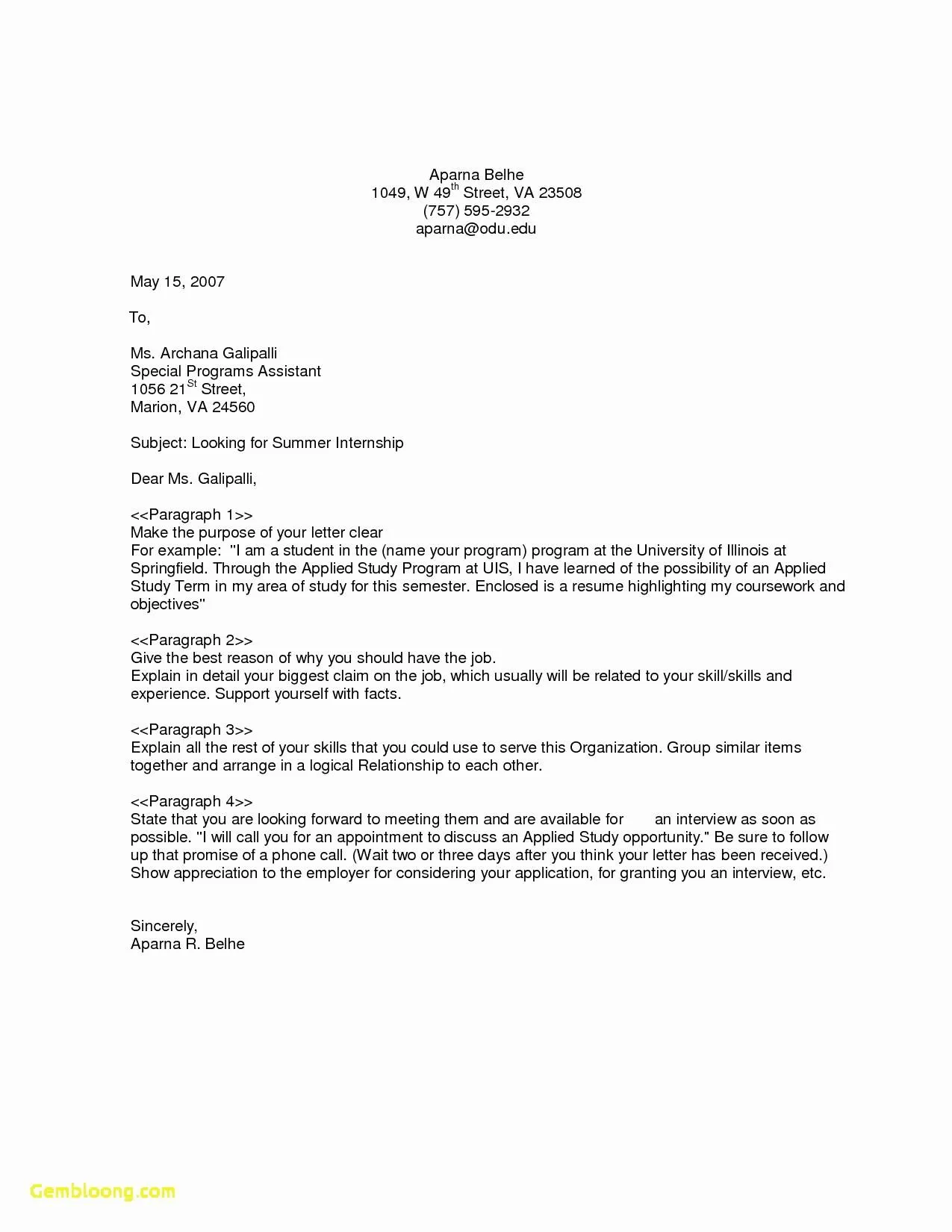
Choose a formal closing to end your cover letter. Common options include “Sincerely,” “Best regards,” or “Yours sincerely.” Select the closing that aligns with the overall tone of your letter. Avoid casual closings such as “Thanks” or “Best.” The formal closing sets the tone for the remainder of the letter. By selecting a closing that is appropriate for the role, you convey respect and professionalism and show that you are serious about the position and are looking to make a good impression.
Sign Off
Sign off with your full name. Type your name below the closing to show the reader who the letter is from. Ensure that your name is clearly visible and easily readable. This makes it easy for the hiring manager to identify you. The sign-off confirms your commitment to the company, the opportunity, and the potential future with the company. Make it easy for the hiring manager to respond by making sure your contact information is accessible and easy to read.
Proofreading and Editing
Proofreading and editing are essential steps to ensure your cover letter is polished and professional. Carefully review your letter for any grammatical errors, typos, and inconsistencies. Check the spelling of the hiring manager’s name, the company name, and the job title. Read the letter aloud to check for any awkward phrasing or unclear sentences. Use grammar and spell-checking tools, but don’t rely on them completely. Ask a friend, family member, or career advisor to review your letter for feedback. Ensuring your cover letter is error-free will boost your credibility and show your attention to detail. It also demonstrates that you are serious about the position and are presenting your best self.
Formatting Tips
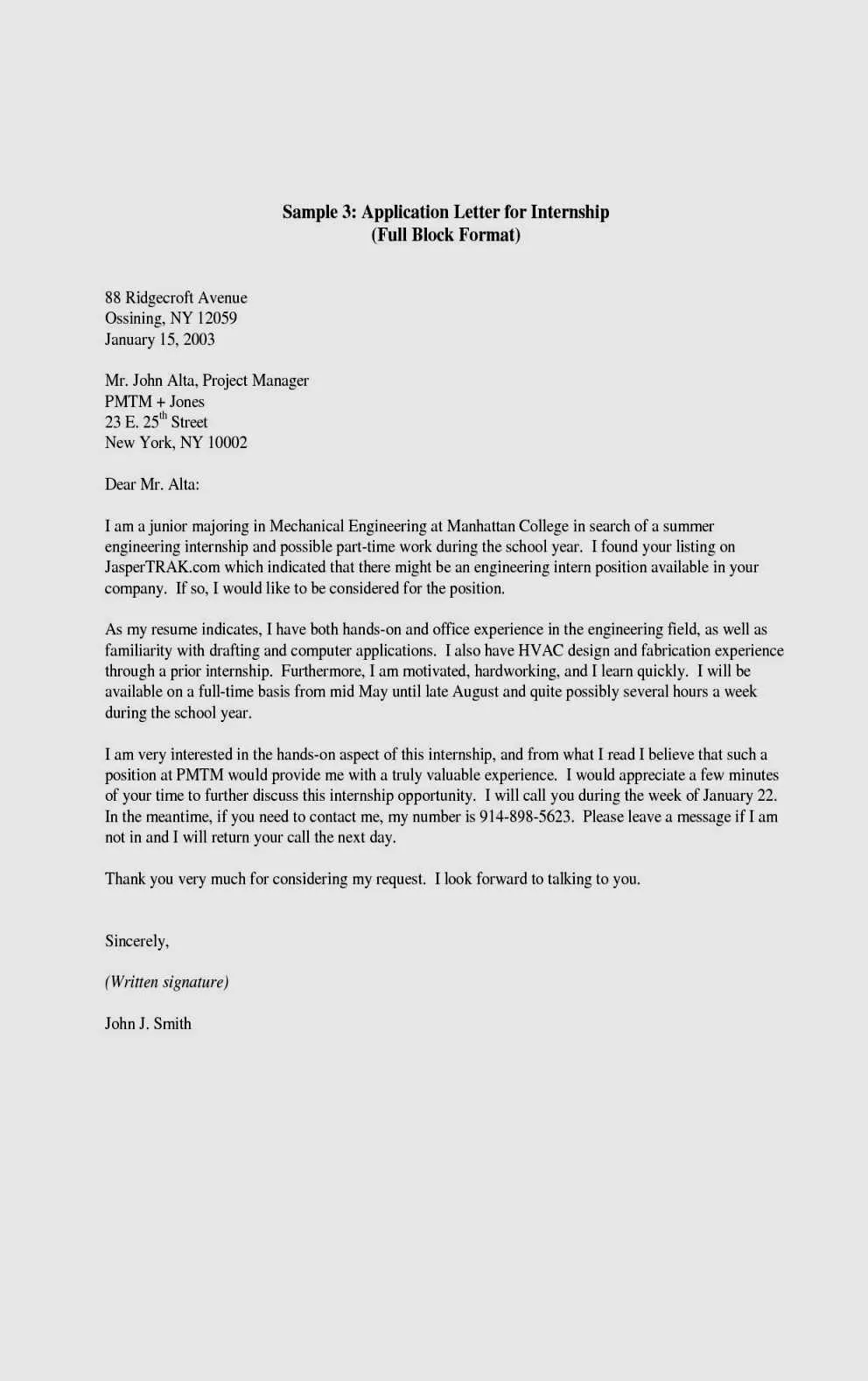
Effective formatting enhances the readability and visual appeal of your cover letter. Use a professional font like Times New Roman, Arial, or Calibri in a standard size (11 or 12 points). Maintain consistent formatting throughout the letter, including the font, font size, and spacing. Use single-spaced lines with a space between each paragraph. Align the text to the left and avoid justification, which can make the letter look cluttered. Ensure that the layout is clean and easy to read, with ample white space. Proper formatting makes your letter visually appealing and helps the hiring manager focus on your qualifications and enthusiasm.
Common Mistakes to Avoid
Several common mistakes can undermine the effectiveness of your cover letter. Avoid using generic templates that do not reflect your unique experiences and skills. Do not repeat information from your resume verbatim; instead, provide additional details and context. Do not make any typos, grammatical errors, or spelling errors. Avoid being overly formal or informal. Avoid negative language or criticizing past employers. Do not send a generic cover letter for different jobs. By avoiding these pitfalls, you can enhance your chances of making a positive impression and advancing in the hiring process. Focusing on these common mistakes can ensure that your cover letter will stand out to the reader.
Length Considerations
Keep your cover letter concise and to the point. Aim for one page, and avoid going over. Focus on the most relevant and impressive details, and omit unnecessary information. Employers are busy, so you want to respect their time. Make every word count and ensure that your letter is engaging and informative. A concise and well-written cover letter demonstrates your ability to communicate effectively and value the hiring manager’s time. Being brief allows the hiring manager to be able to read the entirety of your letter quickly and efficiently.
Tailoring for Different Job Types
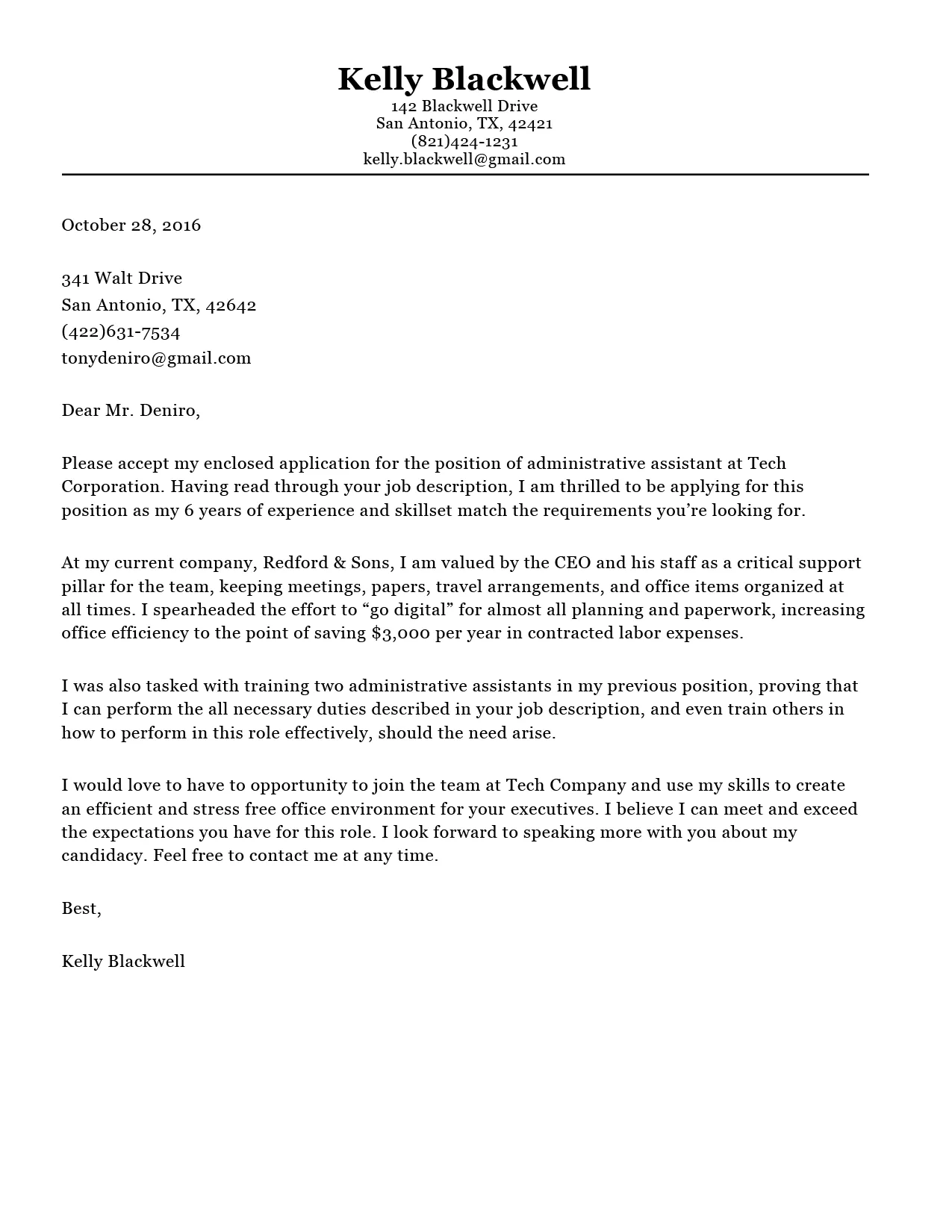
Tailor your cover letter to the specific requirements and expectations of different job types. Research the company and the role to understand its values and priorities. Carefully review the job description and identify the skills, experience, and qualities that the employer is seeking. Adjust your cover letter to emphasize those elements and show how you meet the specific needs of the role. Tailoring demonstrates your genuine interest and your commitment to the position. Customize each cover letter to align with each role you apply for, which is crucial for success. Consider the different requirements of each role.
Entry-Level Positions
For entry-level positions, emphasize your transferable skills, education, internships, and any relevant coursework or projects. If you have limited work experience, highlight your accomplishments in academic, volunteer, or extracurricular activities. Show enthusiasm, a willingness to learn, and a strong work ethic. Frame your letter to demonstrate your potential and your eagerness to contribute to the company. Highlight achievements, and describe how you have succeeded in the past, even if the experience is not a direct fit to the role.
Experienced Professionals
Experienced professionals should showcase their most significant achievements and quantifiable results. Focus on your accomplishments, your leadership experience, and your ability to drive positive change. Clearly demonstrate how your skills and experience align with the specific requirements of the role and how you can contribute to the company’s success. Use data and metrics to support your claims and highlight your expertise. Ensure your letter highlights any awards or recognitions you have received. Show how you can leverage your skills to contribute to the company’s goals.
